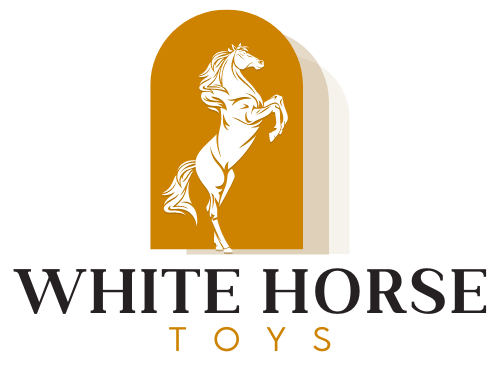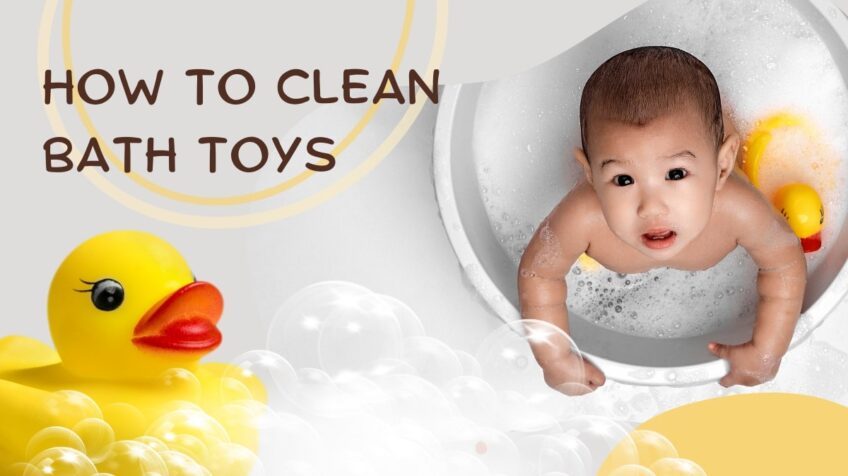Worried about germs in your kids’ bath toys? Don’t be! We’ve got 6 tips on cleaning them. Let’s make baths sparkle! Get ready to keep your fam healthy!
Importance of Properly Cleaning Bath Toys
Parents and caregivers are made aware of the significance of keeping cleanliness in kids’ bath toys. Ignoring to clean toys can cause germs to develop, leading to illnesses. Parents can educate their kids about cleaning their toys and follow 6’s safe and effective tips to keep them germ-free.
How to Prevent Mold Growth
Keep your child safe and protect them from bacteria! Clean bath toys and store them in the right way to prevent mold growth and musty smells. Follow these 6 tips for an effective and secure approach. Don’t let harmful bacteria affect your little one – take the necessary precautions!
Squeeze Water Out and Optimize Drying
Squeeze excess water from toys after each bath. Let them air dry. Use vinegar or bleach as natural cleaning agents. Sterilize rubber toys with hot water & tea tree or lemon oil. For plastic toys, run them through the dishwasher on a hot cycle. That way, no mold or germs will grow.
Seal Holes
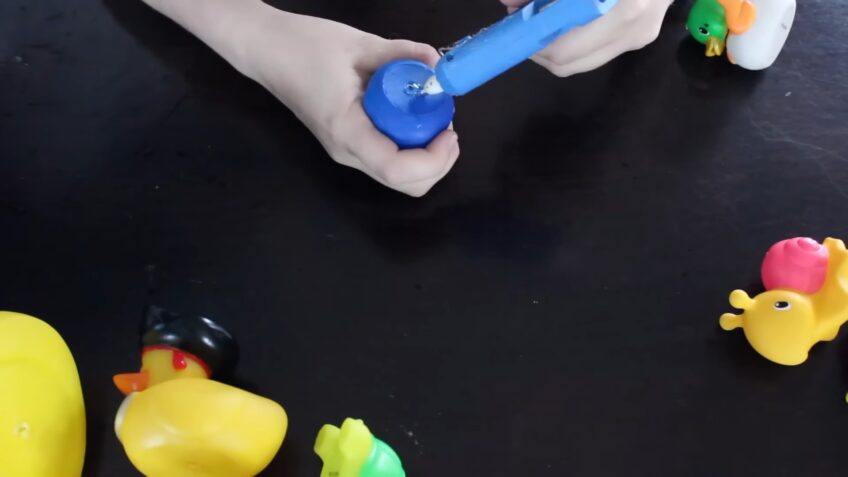
Sealing the holes in bath toys is a must to keep mold and germs from causing disease. They are often full of water, soap scum, and other things that mold and bacteria like. The warmth and moisture of the bathroom also help them grow. Sealant prevents water from entering and creating a home for them.
To seal your child’s bath toys:
- Clean them with soap, warm water, and a bit of vinegar or tea tree oil.
- Squeeze out any water with a towel and dry it completely.
- Put silicone sealant on all the openings of the toy.
- Leave it to dry overnight before using it again.
This is a great way to protect your child from germs. Professional house cleaners can help with a thorough cleaning using child-safe products.
Cleaning with Vinegar
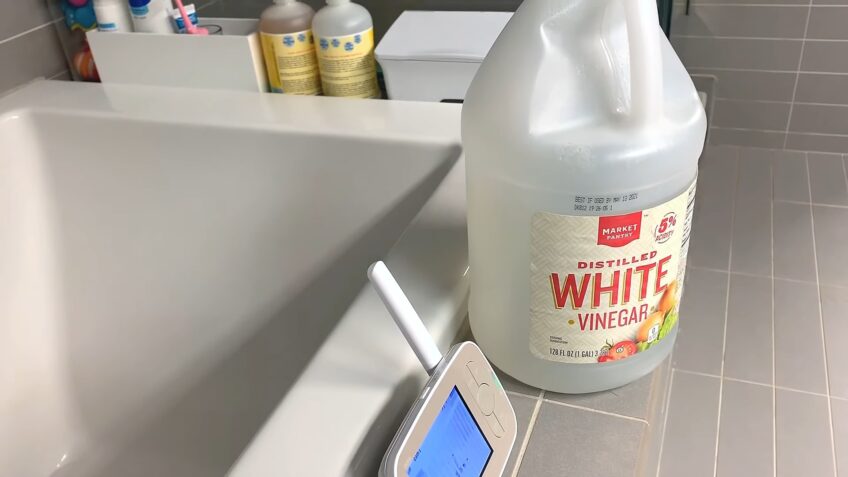
Vinegar can be a cheap and effective way to sanitize your kid’s bath toys. It’s safe for rubber and plastic. It helps to get rid of mold and grime. Follow these simple tips to clean and sterilize the toys without exposing them to dangerous chemicals.
Benefits of Vinegar
Vinegar is a great, cost-effective item for your home! It can provide multiple benefits, like cleaning bath toys. Here are some benefits of using vinegar for cleaning:
- Removes stains: Vinegar helps break down tough stains from hard water or minerals. It can get rid of soap scum, dirt, and grime on bath toys.
- Kills germs: It has antimicrobial properties to destroy disease-causing germs and bacteria. A safer option than chemical cleaners.
- Safe for kids: Natural and non-toxic, it’s gentle for bath toys made of plastic, rubber, or silicone.
- Saves money: Affordable and easy to find. A great way to avoid expensive house cleaning services.
Remember to mix vinegar with tap water and use it to clean other household items like showerheads, faucets, and glass surfaces. Keep your home clean and germ-free with vinegar!
Mixing Steps and Soaking Time
For best results, mix equal parts water and white vinegar in a bowl. Then, soak the toys in the solution for 10-15 minutes, depending on the dirtiness. Rinse the toys with clean water and let them dry before reuse.
Pro tip: Add baking soda to the vinegar-water solution to remove stains and odors. Heat the vinegar-water mixture in the microwave for a few seconds to create a warm cleaning solution. This can help to clean bath toys even better!
Sterilizing with Heat
Heat Sterilization is the way to go for keeping your child’s bath toys clean and germ-free. Let’s learn how it works with these tips:
- Keep your loved ones safe from bacteria.
- Make sure their toys are always clean and hygienic.
Dishwasher Method
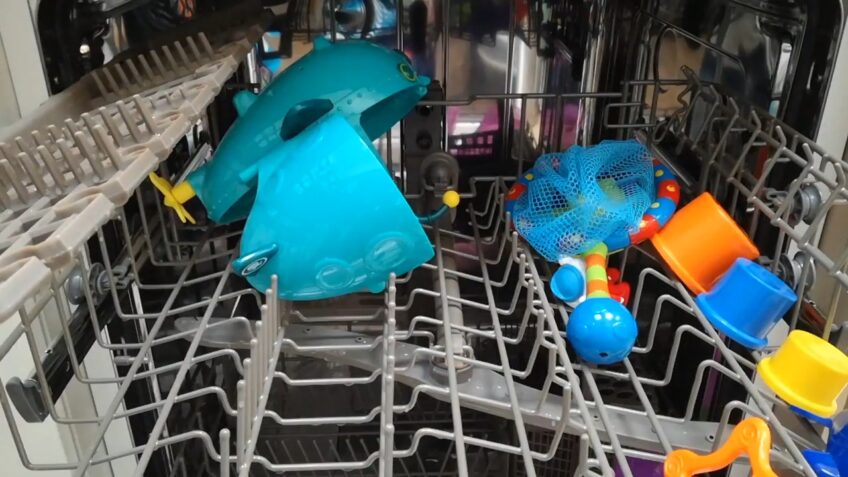
For busy parents, the dishwasher method for cleaning bath toys is a total game-changer! You save time and effort, plus your child’s toys get totally cleaned and sanitized. Here’s how it works:
- Gather all your bath toys. Put them in the dishwasher basket.
- Add a bit of dish soap and vinegar to the dishwasher.
- Set it to a hot water cycle and run it.
- Remove the toys, then rinse them off with water.
This method is great not just for them, but also for house cleaning. It’s a time-saver and an effort-saver for those with busy schedules.
Sink Method
Try the sink method for a quick and effective clean. Plug the sink, and fill it with hot water and a capful of bleach or vinegar. Add them and let them soak for 10-15 mins. Scrub each toy with a sponge or brush. Pay extra attention to any crevices or hard-to-reach areas. Rinse thoroughly with warm water. Let the toys air dry. This method not only cleans the toys but also ensures they’re safe for your child.
Pro tip: Clean them regularly and store them in a well-ventilated area to prevent mold and bacteria growth.
Sanitizing Bath Toys with Bleach
Sanitizing bath toys with bleach is vital for your child’s health and hygiene. Harmful bacteria and mold can be found on bath toys, which can lead to infections and illnesses. Bleach is an effective way to kill germs.
We will explain how to correctly sanitize the bath toys with bleach so that your child can have fun and stay safe.
Proper Bleach Dilution
To keep your child safe and help bath toys last longer, proper bleach dilution is key. Too much can damage them, while too little won’t get rid of germs. A 1 tablespoon bleach to 1-gallon water ratio is usually enough.
Here’s how to do it:
- Measure the bleach and water using a cup.
- Add bleach to the water and mix thoroughly.
- Use the diluted solution right away, don’t store it.
After cleaning, rinse bath toys with clean water and let them air dry. With the right bleach dilution, your child is safe and their toys remain clean!
Soaking Time
Soaking Time is key for cleaning bath toys. Different materials need different durations to get rid of germs, viruses, and bacteria. Determining the best soaking time allows your kid’s bath toys to be clean and safe.
To figure out the perfect soak period, consider the toy’s material. For plastic toys, a 5-minute soak in a mix of 1 part vinegar and 10 parts water is enough to kill germs. For fabric toys, use 1/4 cup of bleach per gallon of water for 5 minutes. Rubber or silicone toys should have a 10-minute soak in hot water.
By taking into account soaking time for all materials, you can keep your child’s bath toys clean and stop illness.
Additional Tips on Cleaning Kids’ Toys
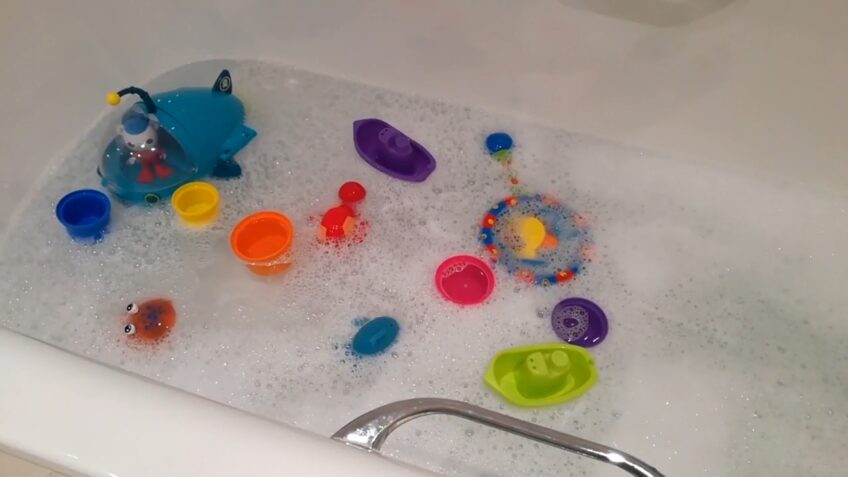
Parents, we know it’s vital to keep kids’ toys clean. Regular cleaning isn’t always enough. Here are extra tips and tricks to ensure your child’s toys are not only clean but also safe and germ-free.
- Follow manufacturer instructions: Before cleaning any toy, always check the manufacturer’s instructions for cleaning recommendations. Some of them may require special cleaning methods or may not be safe to clean with certain products.
- Use non-toxic cleaning solutions: When cleaning them, it’s important to use non-toxic cleaning solutions that are safe for children. Avoid using harsh chemicals or bleach, which can be harmful if ingested.
- Consider using a dishwasher: Many of them can be cleaned in the dishwasher on the top rack. This is a quick and easy way to sanitize toys without using harsh chemicals.
- Use a cloth or sponge: When cleaning toys, use a soft cloth or sponge to avoid scratching or damaging the surface of the toy. For tougher stains, try using a soft-bristled brush.
- Rinse thoroughly: After cleaning them, always rinse them thoroughly with clean water to remove any leftover cleaning solution or debris.
- Dry them completely: To prevent mold and mildew growth, it’s important to dry toys completely before storing them. Use a clean towel or air dry them in a well-ventilated area.
- Store toys properly: Store them in a clean, dry area to prevent the growth of mold or bacteria. Avoid storing toys in humid or damp areas, such as bathrooms or basements.
By following these additional tips on cleaning kids’ toys, you can help keep your child’s toys clean and safe for use. Regular cleaning them not only promotes good hygiene but can also extend the life of the toys and keep them looking new.
FAQs
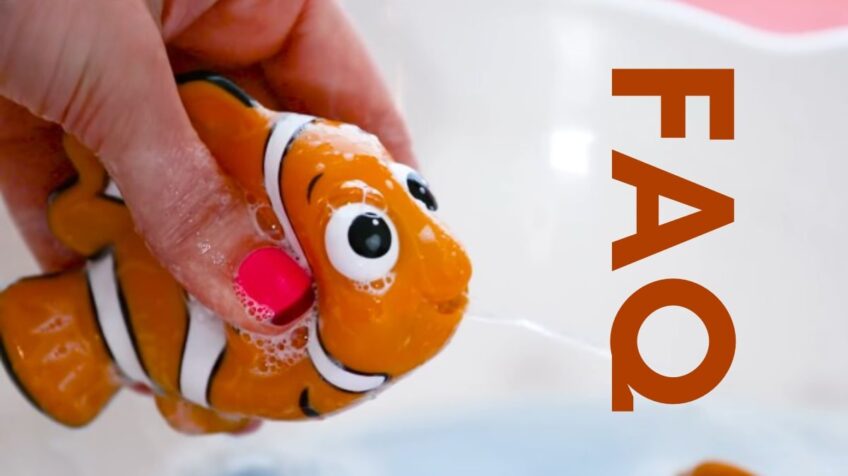
How do I dry them after cleaning?
To dry them after cleaning, use a clean towel or air dry them in a well-ventilated area.
Can I use essential oils to clean bath toys?
While essential oils can have antibacterial properties, it’s important to dilute them properly and use caution when using them around children.
How do I prevent mold from growing on bath playthings?
To prevent mold from growing on bath playthings, make sure to thoroughly dry them after each use and store them in a dry, well-ventilated area.
Can I use baking soda to clean bath playthings?
Yes, they can be a safe and effective way to clean bath playthings. Mix it with water to form a paste and use a soft-bristled brush to scrub the toys.
How do I clean bath toys with electronic components?
They should not be submerged in water. Instead, wipe them down with a damp cloth and use a Q-tip to clean small crevices.
Can I use dish soap to clean bath playthings made of rubber?
Yes, dish soap mixed with water can be a safe and effective way to clean ones made of rubber.
How do I clean bath toys made of wood?
To clean bath toys made of wood, wipe them down with a damp cloth and mild soap, then dry them thoroughly.
Are there any special considerations when cleaning bath playthings for infants?
When cleaning bath playthings for infants, it’s important to use non-toxic cleaning solutions and rinse them thoroughly to avoid any potential harm from ingesting leftover cleaning solution.
Conclusion
In conclusion, keeping them clean is an important aspect of maintaining good hygiene for children. By following the safe and effective tips discussed in this article, such as using white vinegar, hydrogen peroxide, or dish soap mixed with water to clean bath playthings, parents can help prevent the spread of germs and bacteria. It’s recommended to clean bath toys after each use, especially if they come into contact with soap, shampoo, or dirty bathwater. To prevent mold and mildew growth, it’s important to dry them thoroughly before storing them in a clean, dry area. Additionally, it’s important to consider the material of the bath toys and follow manufacturer instructions for cleaning to avoid causing any damage. By making cleaning bath toys a regular part of your child’s hygiene routine, you can help keep them safe and healthy during their bath time.
